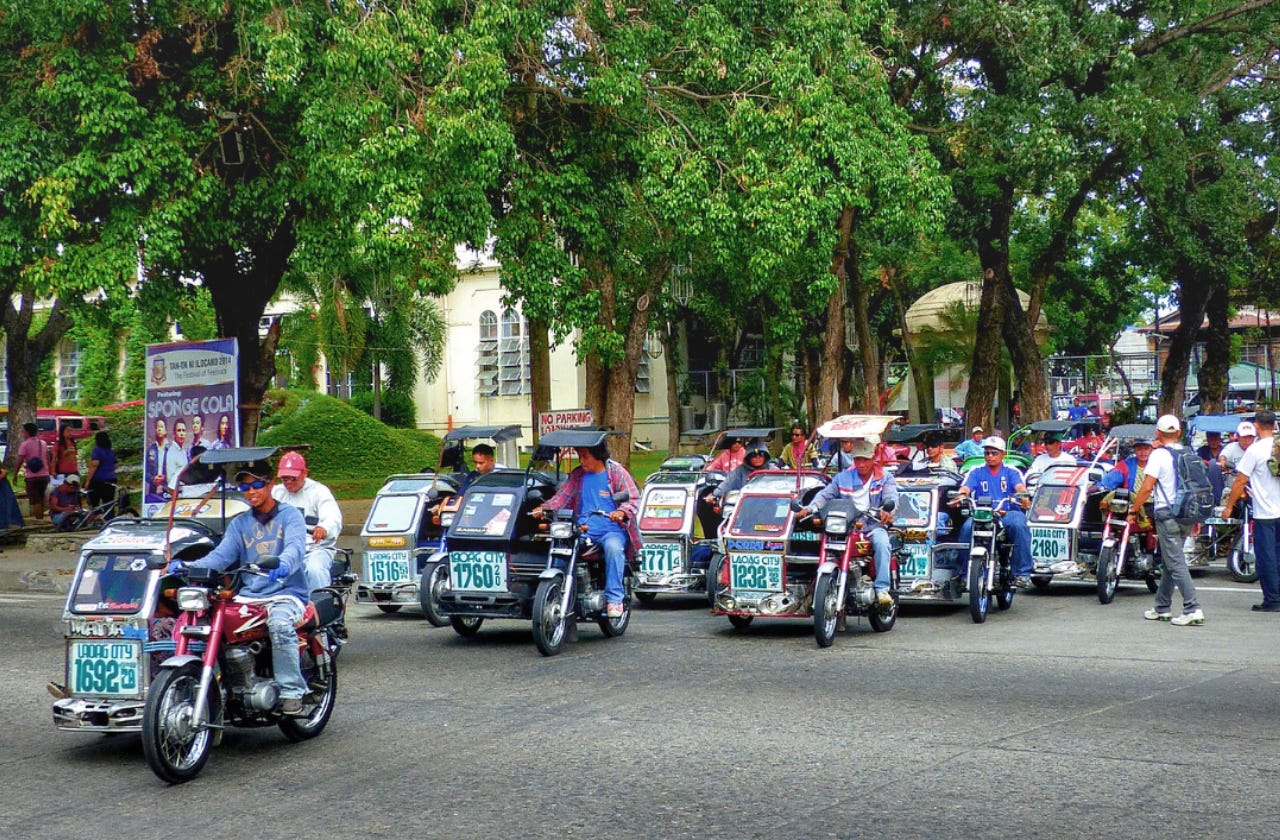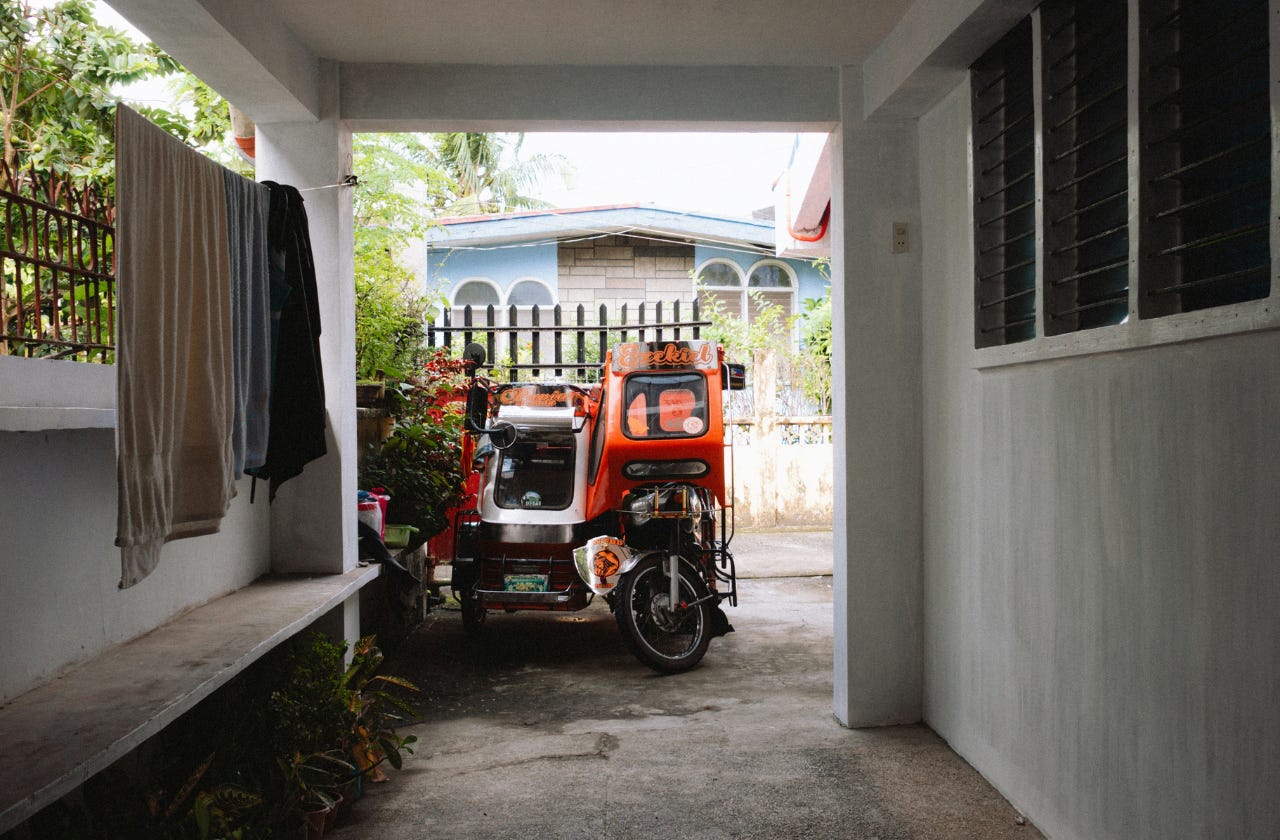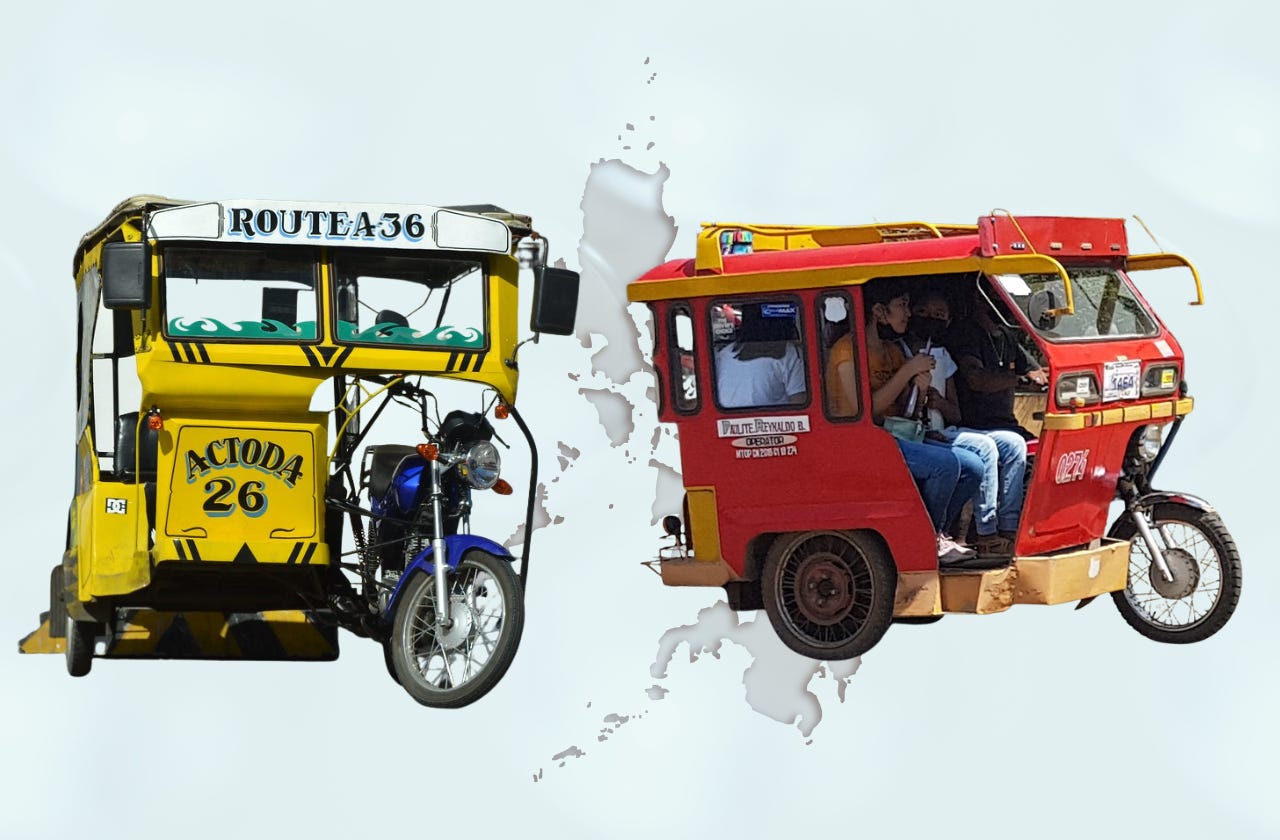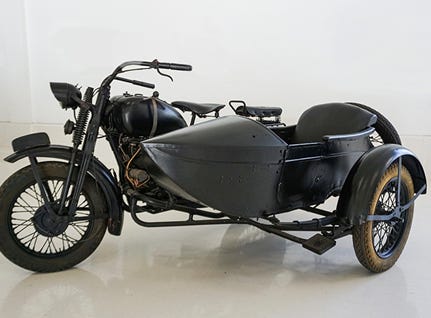The Philippine Tricycle
A closer look at the Filipino's humble chariot.
They say Filipinos can make anything work.
And nothing proves that more than our beloved tricycle. A motorcycle bolted to a welded sidecar and somehow blessed by divine balance? Yeah, it shouldn’t work. But it does. And it’s been getting us places – literally and metaphorically – for generations.
These modern-day metal beasts are the descendants of Japan’s WWII military tricycles, a relic of war repurposed into something far more peaceful: the daily commute. After the war, abandoned motorcycles and sidecars found new life in Filipino hands.
Mechanics, tinkerers, and dreamers saw potential where others saw scrap metal. With a few bolts, some bending of steel, and a whole lot of bahala na, the tricycle was born.
We took something once meant for battle and turned it into a symbol of survival and hustle. Because that’s what Filipinos do. We rebuild, repurpose, and ride on. We take what’s left behind and turn it into something that moves us forward.
The tricycle isn’t glamorous, but it is dependable. It’s the hero that shows up when the Grab driver cancels or when the rain floods everything but your will to survive.
Before Uber (or Grab, for the local crowd), there was always the trike.
Too long of a walk but too short for your Rav4? Take a trike.
Going to school just a few blocks away? Trike.
Missed the last jeepney? Trike.

Heartbroken and just need to feel the wind hit your face dramatically while pretending you’re in an indie film? You guessed it. Trike.
When we say, “we ride at dawn,” we mean it. To get to work. To pay the bills. To chase dreams and deadlines.
A Vehicle Built for Our Roads (and Our Chaos)
It’s not just the convenience; it’s the design genius. The tricycle’s slim build makes it perfect for the narrow alleyways and unpredictable terrain of the Philippines. It can weave through puddles, potholes, and pasaways (you know who you are) with ease.
Reader, I cannot tell you how many times I’ve avoided being grounded back in high school thanks to the convenience of a tricycle (and the cooperation of the local drivers in the area who knew I was up to no good. Bless y’all. May you always have warm pandesal in the morning 😇)
It’s basically the Swiss Army knife of local transport. While buses and jeeps get stuck in traffic, trikes snake through backroads, finding a way when there shouldn’t be one. Because that’s the Filipino way: if there’s no way, we will make a way.
From Freelance Hustle to Formal Recognition
Before 1985, tricycle drivers were freelancers in the purest form. No contracts, no government backing, just pure hustle and heart. They built their own sidecars, managed their own routes, and negotiated every fare by instinct and experience. There was no “association,” no fixed boundary, no protection from the whims of local traffic enforcers. Just survival.

But in October 1985, everything changed. The government finally recognized tricycles as a vital part of public transportation, placing them under the supervision of local governments. This meant drivers could now register officially, operate legally, and be acknowledged for what they had always been: essential workers long before that term became a hashtag.
It was less about bureaucracy and more about validation. For decades, these men (and a few fearless women!) had been ferrying students, workers, and entire families through rain and rush hour, quietly (... okay maybe not that quiet) keeping the country moving. The law simply caught up to what the streets already knew: we’ve been relying on them all along.
It’s wild when you think about it: these drivers had been serving our streets, barangays, and flood-prone corners long before anyone gave them a certificate. They were MVPs from the get-go.
You’ll often see them waiting in line at dawn, sipping coffee from a plastic cup, ready to take strangers where they need to go. Some of them have been doing this for decades. Some have raised entire families on their daily rides.
Not all heroes wear capes, indeed. And in the Philippines, many of them are found riding metal chariots zipping through the cities’ veins.
Tricycles as Moving Art (and Life Stories)
Each tricycle tells a story. Painted in vibrant colors, often with bold statements like “God Knows Hudas Not Pay,” or even dedications to loved ones (“For My Beloved Maria 🥺❤️”), they’re basically the street version of your Notes app affirmations.

Every bolt, decal, and decorative sticker screams: we may not have much, but we’ll make it ours.
Ask around and you’ll find someone who says, “My father’s tricycle put me through college.” That’s not just a line. That’s the story of thousands of Filipino families. Those engines don’t just carry passengers; they carry dreams.
A Symbol of the Filipino Spirit
Every tricycle ride is a small adventure: unpredictable, noisy, occasionally questionable, but always moving forward. It represents our adaptability, our humor, and our drive to keep going no matter how bumpy the road (and oh, the roads will be bumpy).
So, the next time you hop on a trike, remember: you’re not just catching a ride. You’re participating in a small act of national identity. You’re riding a piece of history. One that started from the ashes of war, evolved through the decades, and still shows up every day to take us home. (And work. Ugh)
And if that’s not the most Filipino thing ever, I don’t know what is.






“If there’s no way, we’ll make a way.” That line sums up every tricycle ride (and every Filipino hustle) perfectly. 😂👏
Love the way this was written, it’s more than just a ride! 🙌🏽